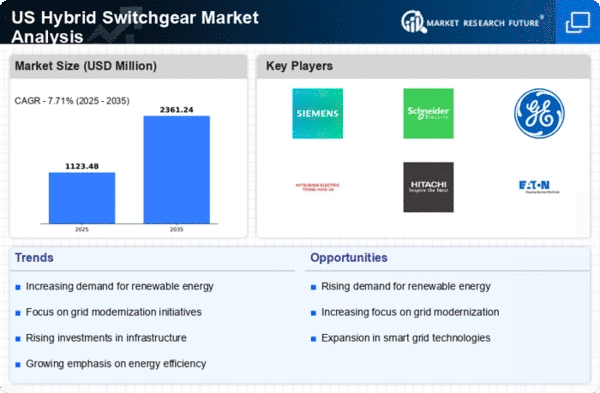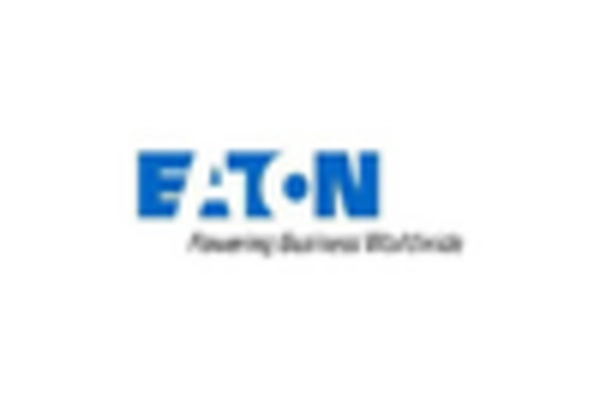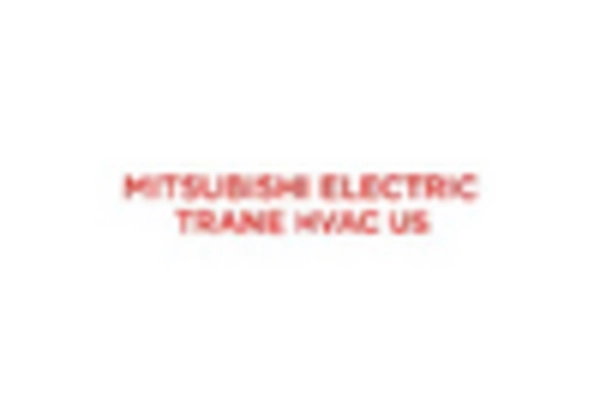Aging Electrical Infrastructure
The aging electrical infrastructure in the U.S. poses significant challenges, necessitating upgrades and replacements to ensure reliability and safety. The hybrid switchgear market is poised to benefit from this need for modernization. Many existing systems are outdated and unable to handle the increasing energy demands of contemporary society. Hybrid switchgear offers a solution by providing enhanced performance and flexibility, making it an attractive option for utilities and industrial applications. As investments in infrastructure modernization are prioritized, the hybrid switchgear market is likely to see a substantial increase in demand, with estimates suggesting a market growth of over 6% annually through the next decade.
Regulatory Support and Incentives
The hybrid switchgear market is significantly influenced by regulatory frameworks and incentives aimed at promoting energy efficiency and sustainability. Various federal and state policies encourage the adoption of advanced electrical infrastructure, including hybrid switchgear systems. For instance, tax credits and grants for renewable energy projects often include provisions for modern switchgear technologies. This regulatory support not only enhances the attractiveness of hybrid switchgear but also stimulates investment in the sector. As a result, the market is likely to witness a steady increase in demand, with projections indicating a potential market value exceeding $2 billion by 2030. Such incentives are crucial for driving the growth of the hybrid switchgear market.
Urbanization and Smart City Initiatives
The ongoing trend of urbanization in the U.S. is contributing to the expansion of the hybrid switchgear market. As cities grow, the demand for reliable and efficient electrical infrastructure intensifies. Smart city initiatives, which focus on integrating technology into urban planning, often incorporate hybrid switchgear solutions to enhance grid reliability and efficiency. The hybrid switchgear market is expected to benefit from these initiatives, as they require advanced technologies to manage energy distribution effectively. With urban populations projected to increase, the market could see a growth rate of around 7% annually, reflecting the critical role of hybrid switchgear in modern urban energy systems.
Growing Demand for Renewable Energy Sources
The hybrid switchgear market is experiencing a notable surge in demand due to the increasing integration of renewable energy sources such as solar and wind power. As the U.S. government emphasizes the transition to cleaner energy, the need for efficient and reliable switchgear solutions becomes paramount. Hybrid switchgear, which combines the benefits of traditional switchgear with advanced technologies, is particularly suited for managing the complexities associated with renewable energy integration. The market is projected to grow at a CAGR of approximately 8% from 2025 to 2030, driven by this shift towards sustainable energy solutions. This trend indicates a robust opportunity for manufacturers and suppliers within the hybrid switchgear market to innovate and expand their offerings.
Technological Innovations in Electrical Equipment
Technological advancements in electrical equipment are driving the evolution of the hybrid switchgear market. Innovations such as digital monitoring, automation, and improved insulation materials are enhancing the performance and reliability of hybrid switchgear systems. These advancements not only improve operational efficiency but also reduce maintenance costs, making hybrid switchgear an appealing choice for utilities and industries. The market is expected to grow as manufacturers continue to invest in research and development, with projections indicating a potential market size of $3 billion by 2030. This focus on innovation is likely to play a pivotal role in shaping the future of the hybrid switchgear market.
















